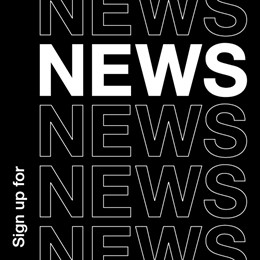Angus’ A-Z of logos: Virgin

Pentagram partner and creative director Angus Hyland discusses the story behind Virgin’s iconic logo.
While the bright red Virgin logo feels like it’s been around forever, the first logo for the company set up by serial entrepreneur Richard Branson looked quite different.
Virgin started out in the music business with a small record store in Oxford Street, followed by a recording studio in Oxfordshire and accompanying record label. Virgin backed a winner; its first album release, Mike Oldfield’s Tubular Bells, has gone on to sell over 15 million copies worldwide.
Designed to look more at home on the cover of a prog-rock LP cover than a transatlantic jet, Virgin’s original logo was drawn by legendary fantasy-scape illustrator Roger Dean (who designed numerous covers for bands like Yes and Asia). The so-called ‘Gemini’ logo was peak ‘70s prog rock, and featured two co-joined twins sitting near a tree, a dragon at their feet and the word ‘Virgin’ in ornate, swirly letters. lt was only when Virgin signed the Sex Pistols a few years later that Richard Branson decided he needed something a little more streetwise.
Sketched on the back of a napkin by young calligrapher Ray Kyte, the new look logo made Virgin start to look like the disruptor brand that it would soon turn into. The letterforms are quite rough, and have a slight bleed as if they’d been drawn with a marker pen. Spontaneous and expressive, they’re the embodiment of the brand’s irreverent, anti-establishment personality.
Since then, brand diversification has become Virgin’s signature move. Most companies dream of launching a successful spin-off, and Virgin launched dozens of sometimes wildly unrelated ones. Over the years the Virgin logo has appeared on everything from planes, trains and spaceships, to cruise ships, condoms and coke bottles. As well as the airline Virgin Atlantic, there have been Virgin cinemas, banks and a media empire including a publishing house and a radio station. There was even a brief stint with Virgin Brides (yes, complete with Richard Branson in full makeup and a wedding dress, a mental image we all wish we could forget).
Whatever you think of Richard Branson, his enthusiasm is hard to ignore. Always a maverick, he’s long been the very public face of Virgin, often turning himself into a mascot for the brand even when it meant looking slightly ridiculous. His willingness to dive in and then try again even when things didn’t go exactly to plan has always been a big part of Virgin’s appeal.
Virgin was a disruptor brand way before it became fashionable to be one. It won peoples’ hearts and minds in a feel good industry (music) and when it launched Virgin Atlantic, it set itself up as the underdog, fighting the big airlines and standing up for the consumer.
Now Virgin is no longer the disruptor, and it’s very much part of the establishment it has always kicked back against. But somehow, it’s still channelling its rebellious roots, even without Branson as CEO.
One thing that’s for certain, from prog rock LPs to space tourism, Virgin has never played it safe. Driven by Branson’s maverick spirit, it’s somehow very successfully gone from punk upstart to mainstream icon without ever fully losing its edge.
Next time: a logo that tugs on your heart strings

Angus' favourite 'U' logo can be found here.













